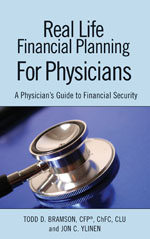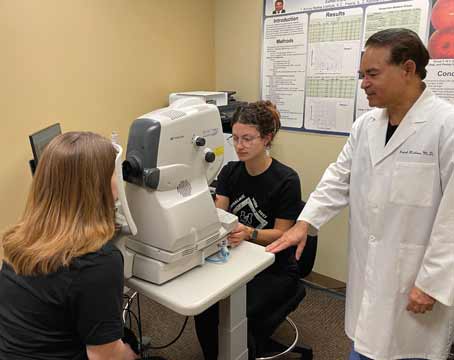 |
Striking a Balance
There is a difference between how much debt you can afford and how much you should take on. I have seen many folks make the mistake of thinking they can afford to purchase a property for the amount the bank approves them for. As a physician, you must look at home purchases as a piece of your overall financial strategy. When you compile all of your financial goals (retirement, kids’ college education, potential vehicles and recreational toys, saving for a rainy day, etc.), you may find that what size mortgage fits into your overall strategy—after Uncle Sam takes his cut—is not as large as the bank may approve. We have found that, from a comprehensive financial preparation perspective, most physicians can comfortably afford resident real estate purchases that total two to three times their gross income. If the home of your dreams is more than this general guideline, it may still be reasonable to purchase as long as you accept the fact that you may have to work a few years into traditional retirement, may not be able to fund as much college for your children as you may have hoped, or may not be able to have all the extras in life that you might have hoped for. On the flip side, if your property is financed for less than two times your gross wages, all the items mentioned above may come more quickly than anticipated.
Financing and Low Interest Rates
Considering that it is usually a long-term decision to settle into a sizeable residence, it’s best to take a historical and long-term perspective on home financing. With depressed real estate in most areas of the country and the historically low interest rates that are available to us at present, it is a great time to be a buyer. Physicians need to realize that locking into long-term fixed rates below 4 percent is an anomaly that we may never see again in our lifetimes. Freddie Mac rates topped off around 18.45 percent in October of 1981. More recently, 30-year fixed rates had been locked in during the early 2000s at above 8 percent. We must not lose sight of the fact that we are all being presented with an opportunity to finance our homes (whether for the first time or re-financing) at interest levels close to the rate of inflation. (For more information on this, visit.)
Which Type of Mortgage
I am often asked at our educational lectures and by physicians in our own client base which home financing option is the right one. It is important to point out that financial advisors do not provide specific mortgage advice, and obviously you need to consult a mortgage professional for advice pertaining to your specific situation. Generally, however, the first determining factor is how long you think you will be in that home.
|
However, if there is a reasonable chance that you may not sell your residence for 15 years or more, you may consider locking into a longer-term, fixed solution.
A huge, often-overlooked variable is that interest payments on a mortgage are deductible on your taxes, in many cases, until you hit the IRS phase-out range (See an accountant for specific advice on your situation). So you need to plan based on the net cost of borrowing. (For example, if you are in a 25-percent tax bracket and your fixed interest rate is at 4 percent, your true net cost of borrowing against your net worth is 3 percent, because at the end of the year you are able to count all the interest you paid when you itemize your deductions, up to a mortgage of $1 million—even if you are like many physicians who are forced to pay under the Alternative Minimum Tax.)
There is no question that you will pay far more interest on your home financing when stretching it over a 30-year vs. a 15-year fixed period, but this is a one-dimensional argument. If you are able to out-invest the net cost of your mortgage interest over the term of your loan, you could potentially create a larger overall net worth if you simply take any money that you would have put towards accelerating the mortgage and put it into an investment that may out grow the cost of borrowing over the long term. When analyzing this decision, pay careful attention to your assumptions, which are not guaranteed. Investments will fluctuate.
Doctor Mortgage Programs
There are a handful of mortgage financing programs that are only available to physicians. These programs originated because lenders recognize the fact that most new doctors can easily afford to pay their mortgages after medical school (and certainly when out of their residencies and fellowships) but traditional loan qualification programs would prohibit them due to high debt-to-income ratios.
 |
Mr. Ylinen is a financial advisor with North Star Resource Group. He co-authored the book Real Life Financial Planning for Physicians. He maintains a national comprehensive financial planning practice that caters almost exclusively to physicians. The information provided in this article is general in nature and is not intended to be specific recommendations. Please consult a financial professional for specific advice in relation to your individual circumstances.
For information on this topic or any other financial matter, direct your inquiries to his website,
askjonylinen.com.






